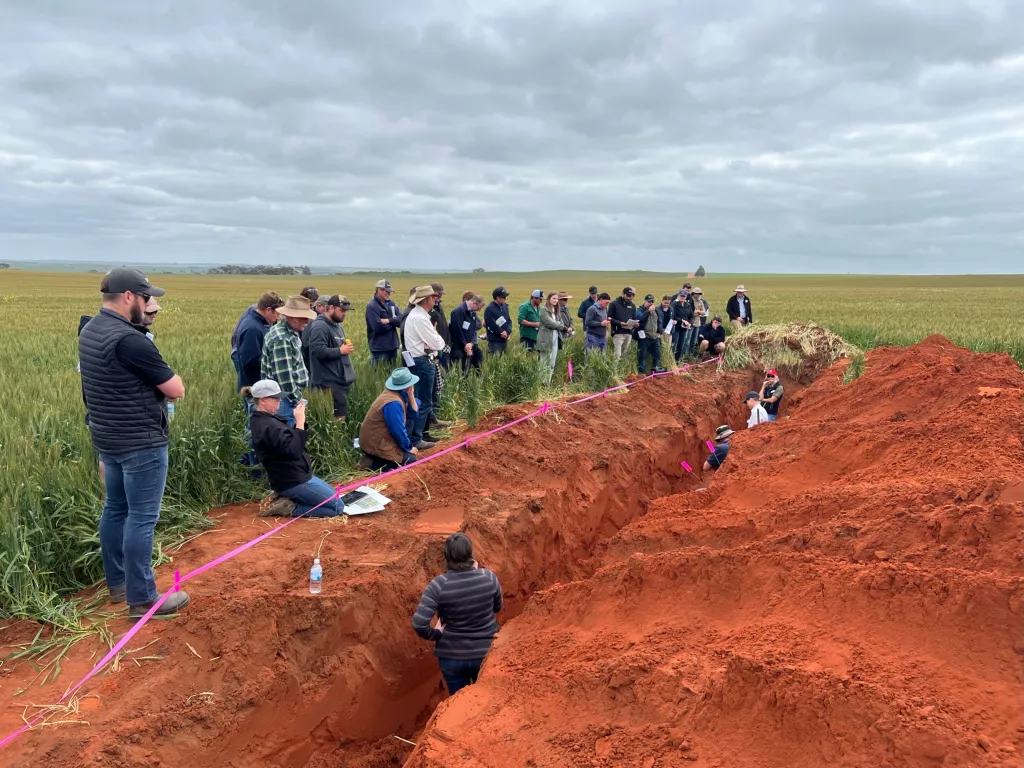Can stubble management strategies help maintain groundcover?
By Kate Parker, WMG Project Officer
One of the main side effects of high crop production and grain yields is an increase in crop stubble left behind after harvest. Despite the long-term benefits of stubble retention, such as improved soil health and water retention, increased organic matter, and prevention of erosion, farmers often struggle to consistently adopt this practice due to short-term management issues. Machinery blockages, reduced crop establishment, nitrogen tie-up and issues with herbicide efficacy and pest control are some of the main challenges. The West Midlands Group (WMG) and Corrigin Farm Improvement Group (CFIG) are helping address these challenges by evaluating different stubble management strategies at 6 sites across the Wheatbelt.
Another key focus of this project is to ensure that farmers achieve adequate groundcover—ideally above the 50% threshold—to significantly reduce the risk of wind and water erosion. Several stubble management strategies were implemented after two successive high production years (2021 & 2022) to allow farmers to keep as much stubble as possible and included leaving stubble standing (existing practice), using machinery to manipulate stubble, and applying nitrogen or bio-stimulants pre-seeding to stimulate stubble breakdown.

To monitor soil groundcover at each of our 6 sites, satellite imagery has been used to estimate fractional groundcover for each treatment, with in-paddock ground truthing in Autumn and Spring of each year. Figure 1 shows that across all 6 sites in the Wheatbelt, soil groundcover was lowest in March and highest in September. This follows the common pattern of groundcover being lowest in Autumn prior to seeding, and highest in Spring preceding harvest.

When analysing the satellite data, all sites are presenting consistent results across treatments with the majority staying above the recommended 50% groundcover threshold (Figure 2). There was an expectation that machinery manipulation and biostimulant treatments would have a greater impact on soil ground cover as they are both working to reduce the amount of stubble on the soil surface. Machinery manipulation incorporates stubbles into the soil for ease of seeding, while adding a biostimulant was hypothesised to increase microbial activity and stubble break down. These effects however, were only transient and groundcover increased following the break of each season.

As shown by the spikes in groundcover percentages, lowest groundcover levels come at the beginning of each season between harvest and seeding. However, a lessening in the severity of these periods of low groundcover can be seen over time following the input of stubble management treatments across all sites, indicating an overall increase in consistent groundcover (Figure 2).
High groundcover levels at the end of each season is also consistent with annual rainfall data (Table 1). 2023 was a lower rainfall year than 2020 (Table 1), however when comparing these two years in groundcover percentages, 2023 was higher (Figure 2). This is an indication that over time, stubble management treatments have increased consistent groundcover across all sites.
| Site | 2020 | 2021 | 2022 | 2023 | 2024 (to date) | LTA (long term average) |
| 1 | 405.5 | 703.2 | 660.1 | 327.2 | 477 | 513.9 |
| 2 | 492.6 | 715.8 | 649.6 | 377.6 | 473.6 | 568.3 |
| 3 | 492.6 | 715.8 | 649.6 | 377.6 | 473.6 | 568.3 |
| 4 | 276.4 | 429.4 | 361 | 325.4 | 347.2 | 377.4 |
| 5 | 259.4 | 457.3 | 444.6 | 329.4 | 225.1 | 372.5 |
| 6 | 243.2 | 348.6 | 430.3 | 182.8 | 254.3 | 320.8 |
As the Stubble Management Project nears completion, the demonstration trials have shown that effective stubble management strategies can enhance groundcover consistency and reduce erosion risks, even during dry years. Despite rainfall variability, the data collected across this project indicates that these practices can help farmers maintain groundcover above the critical 50% threshold, which is vital for long-term soil fertility and sustainability.
This Stubble Management Project is supported by funding from the Western Australian Government through the State NRM program. For more information, head to the project page or get in contact with WMG Project Officer Kate Parker at projects@wmgroup.org.au.














